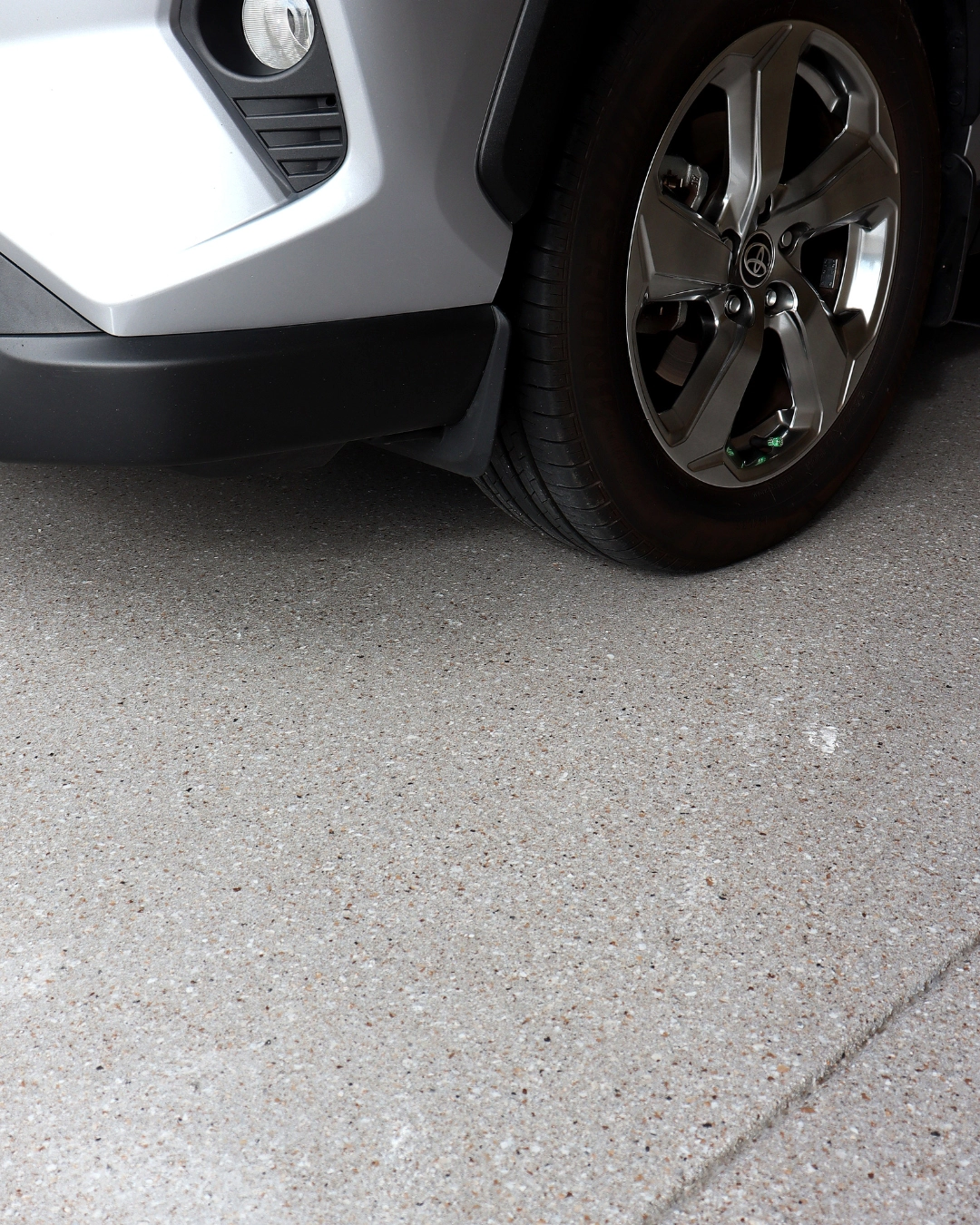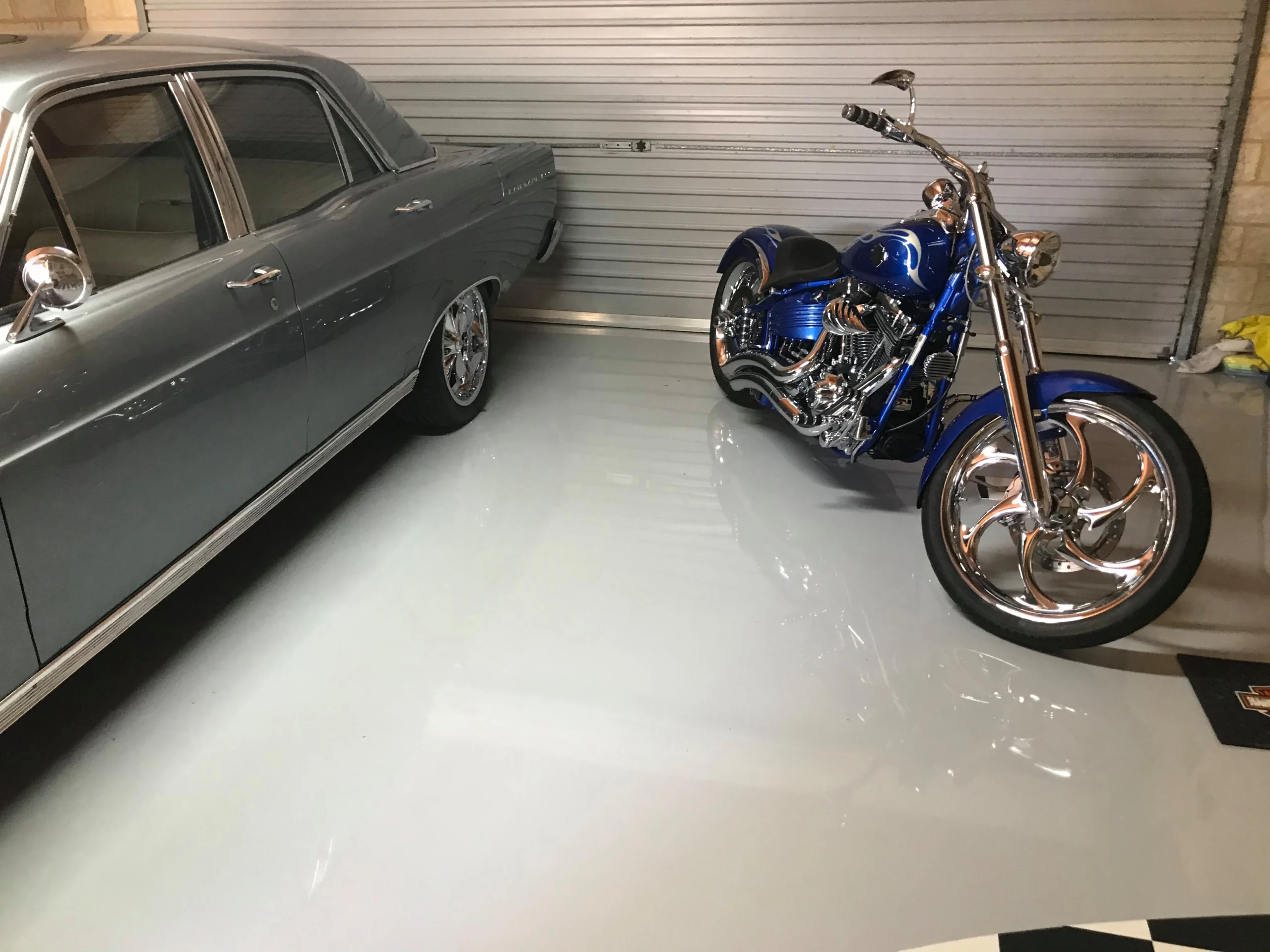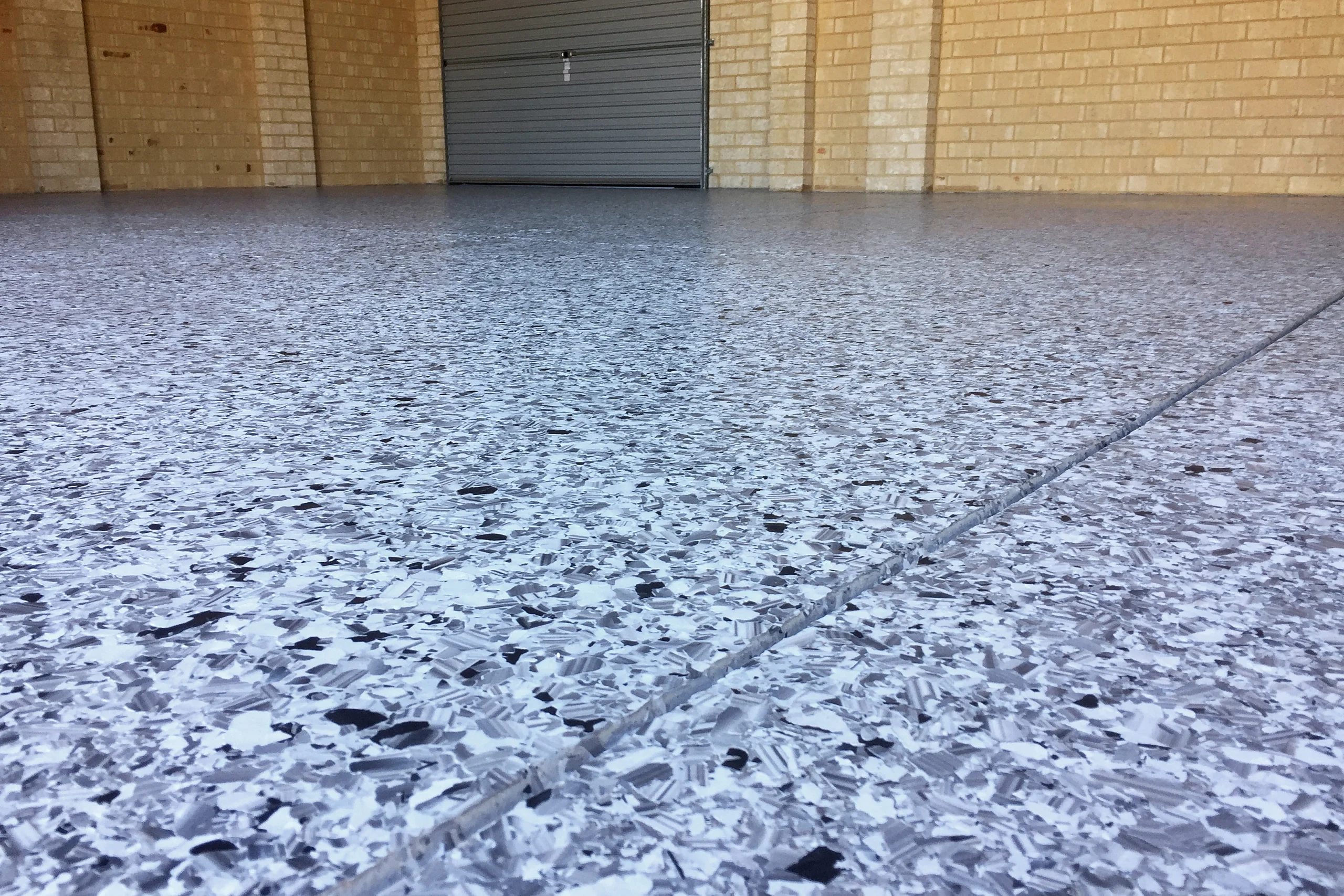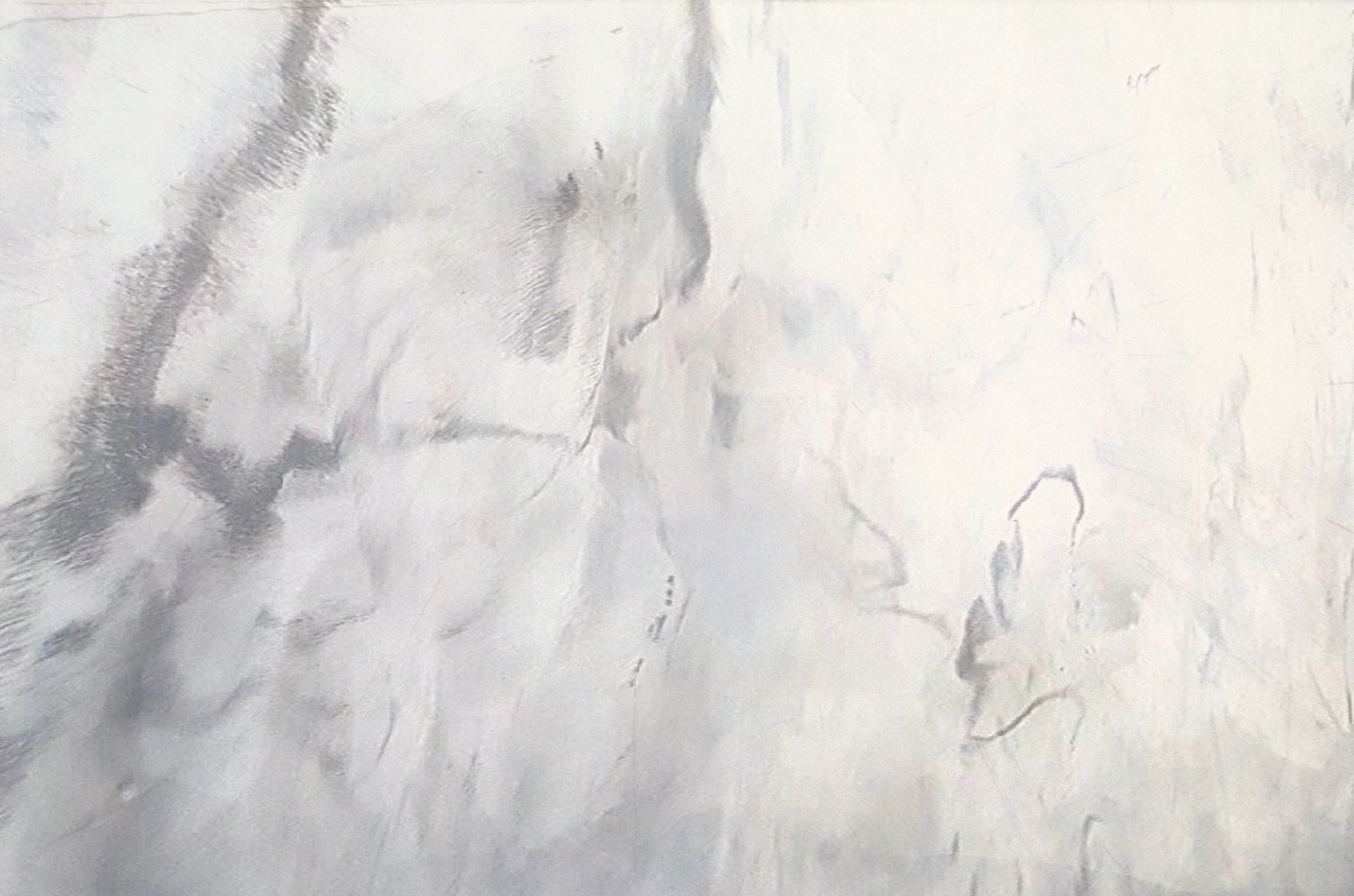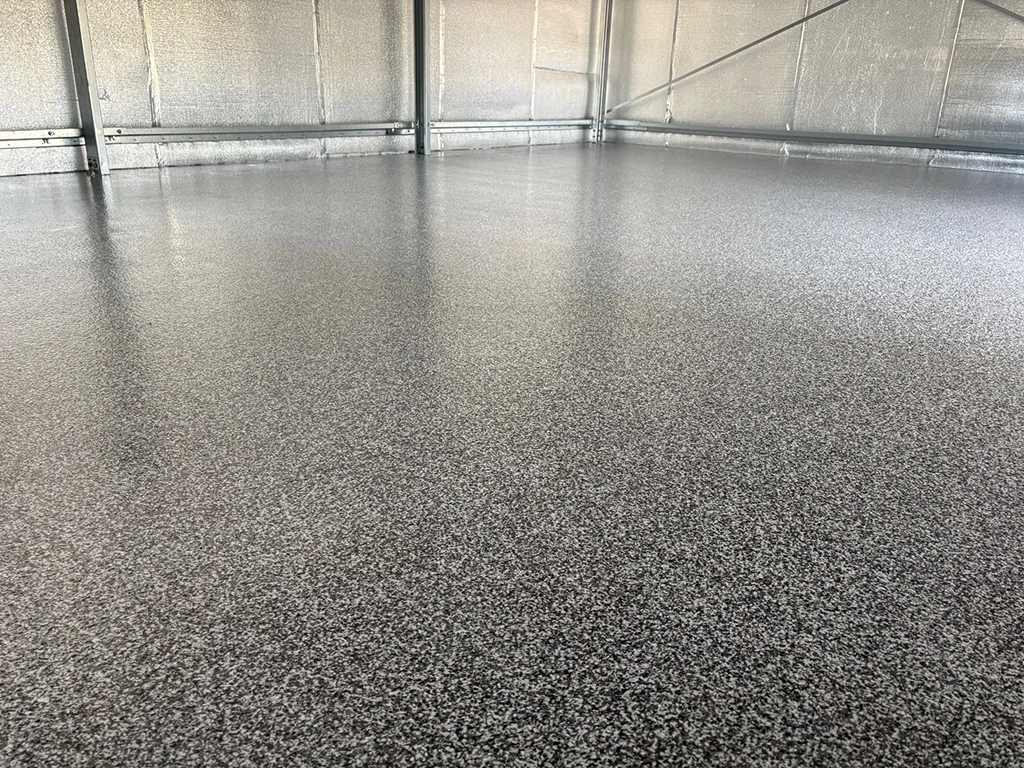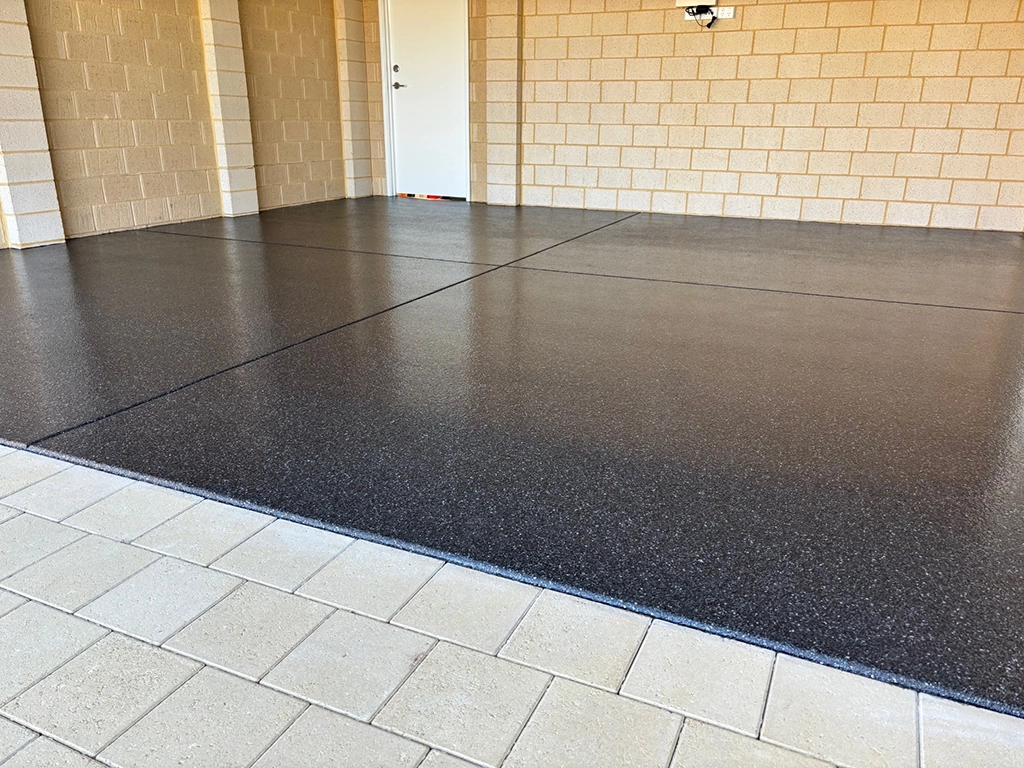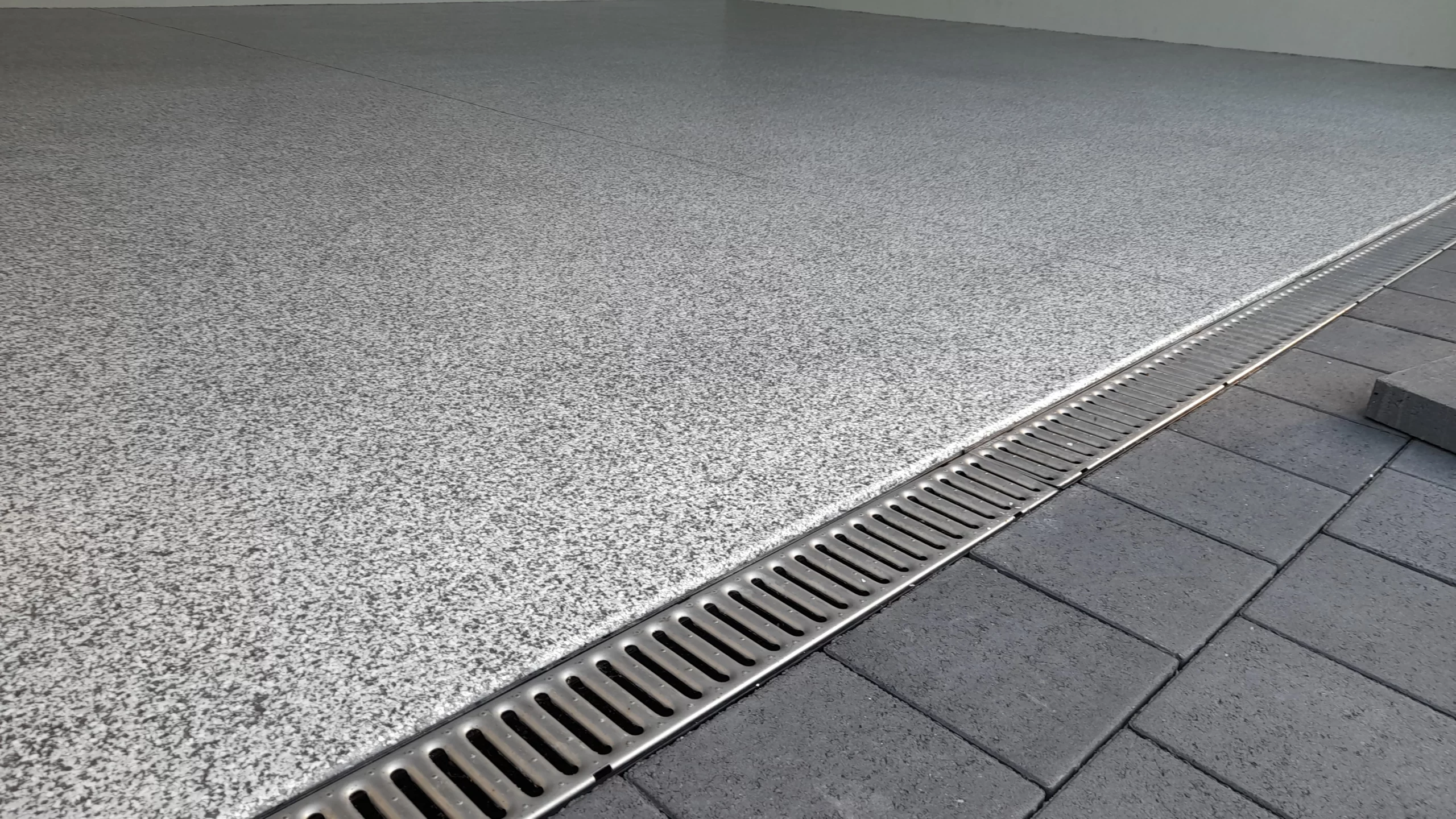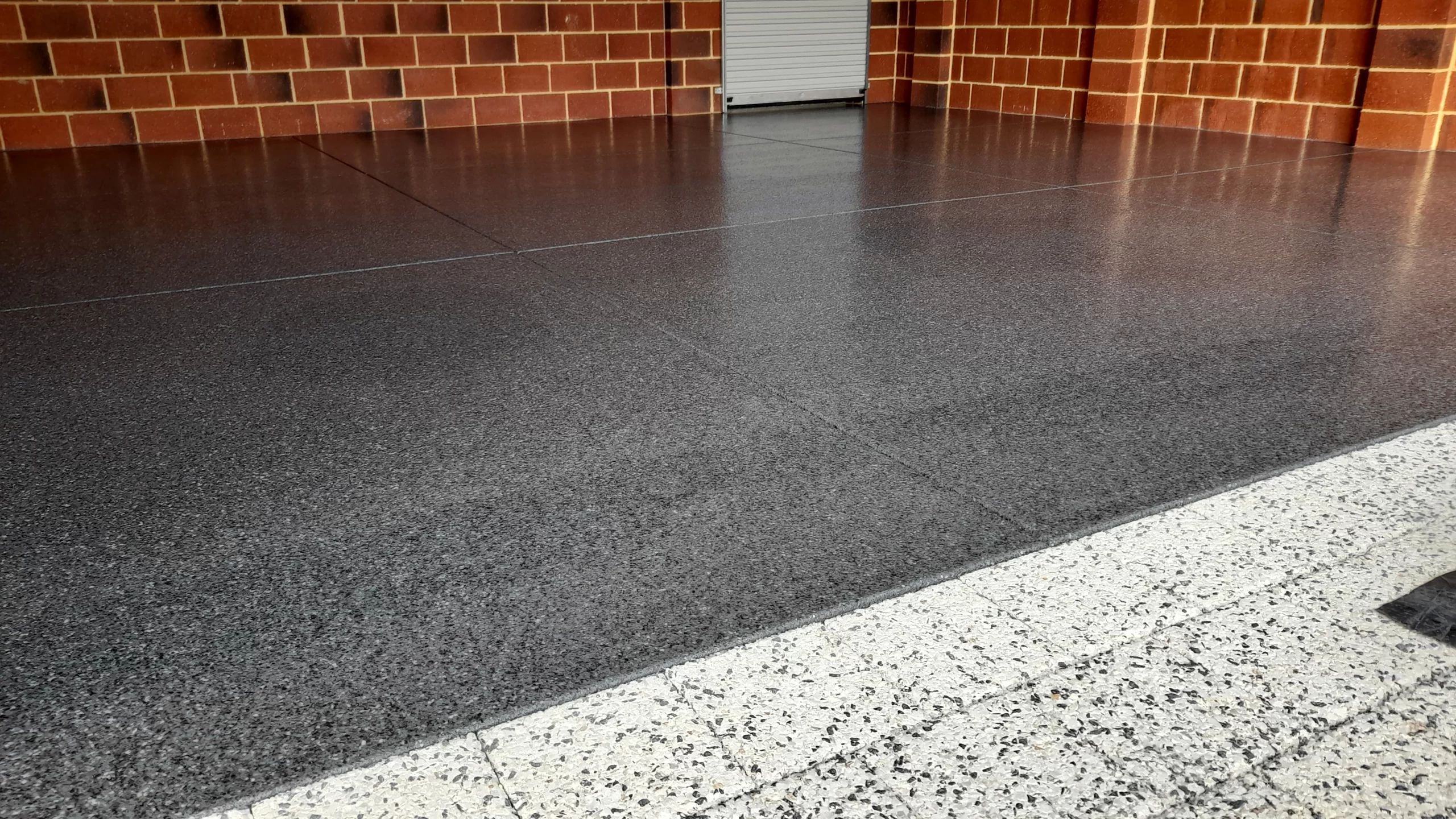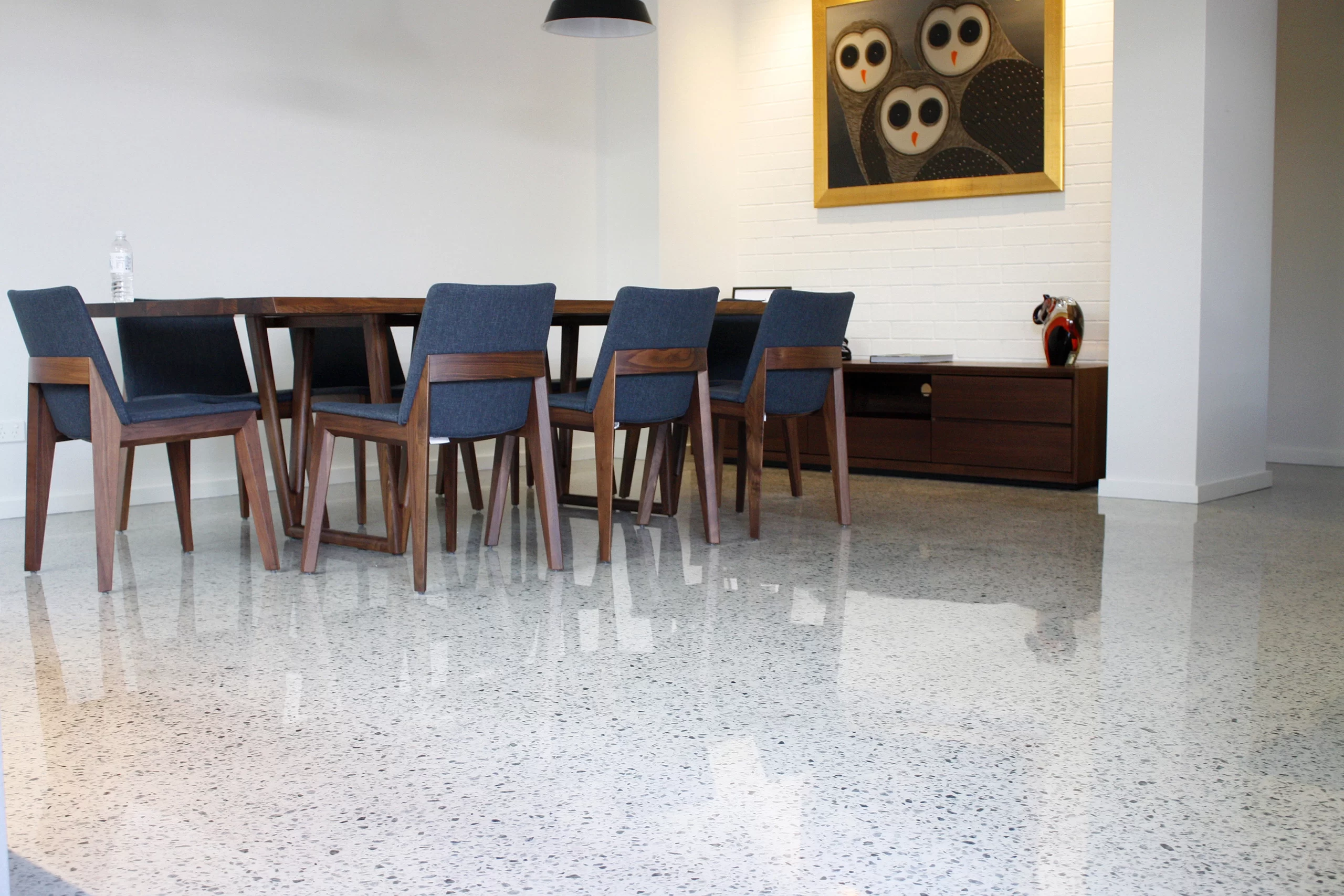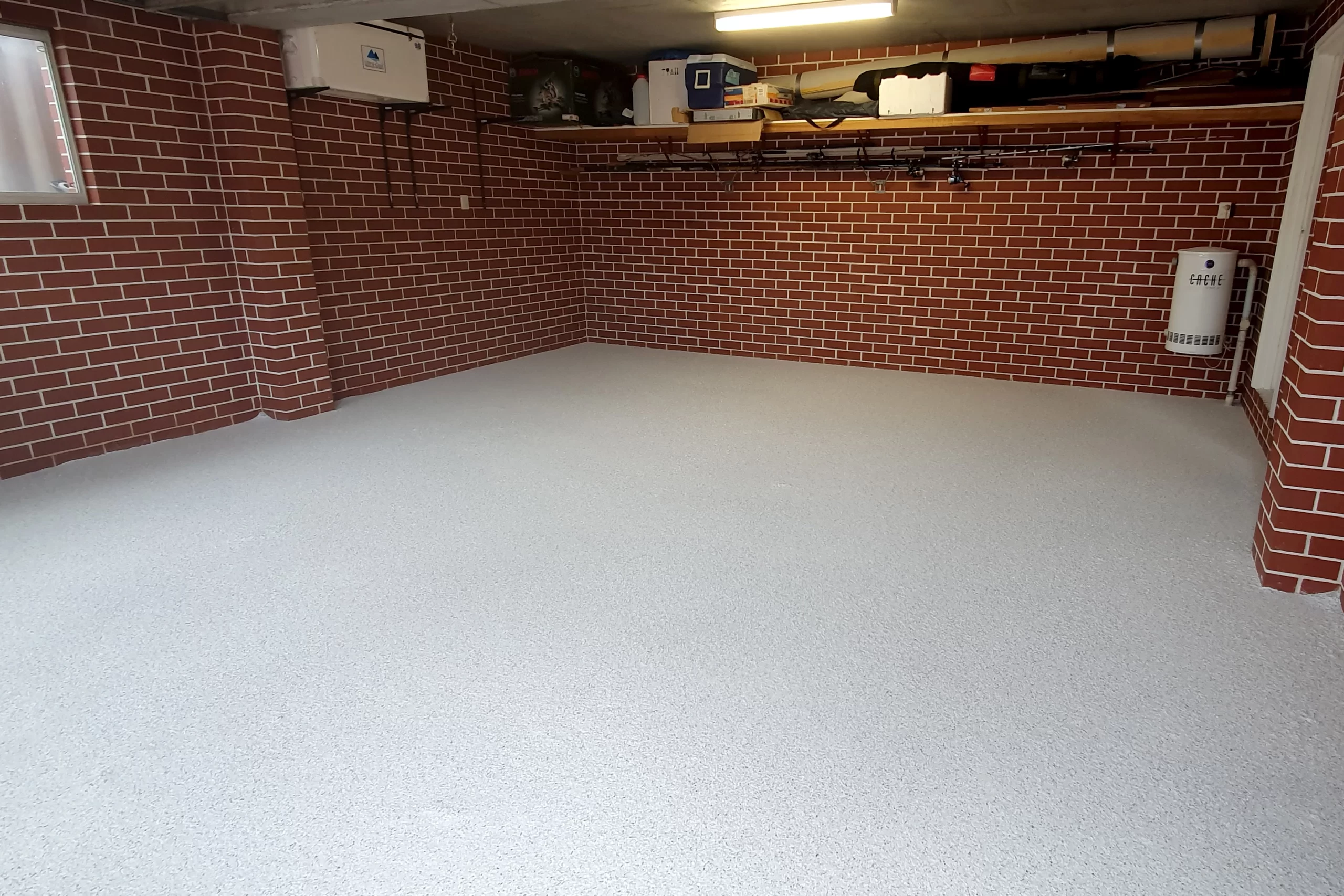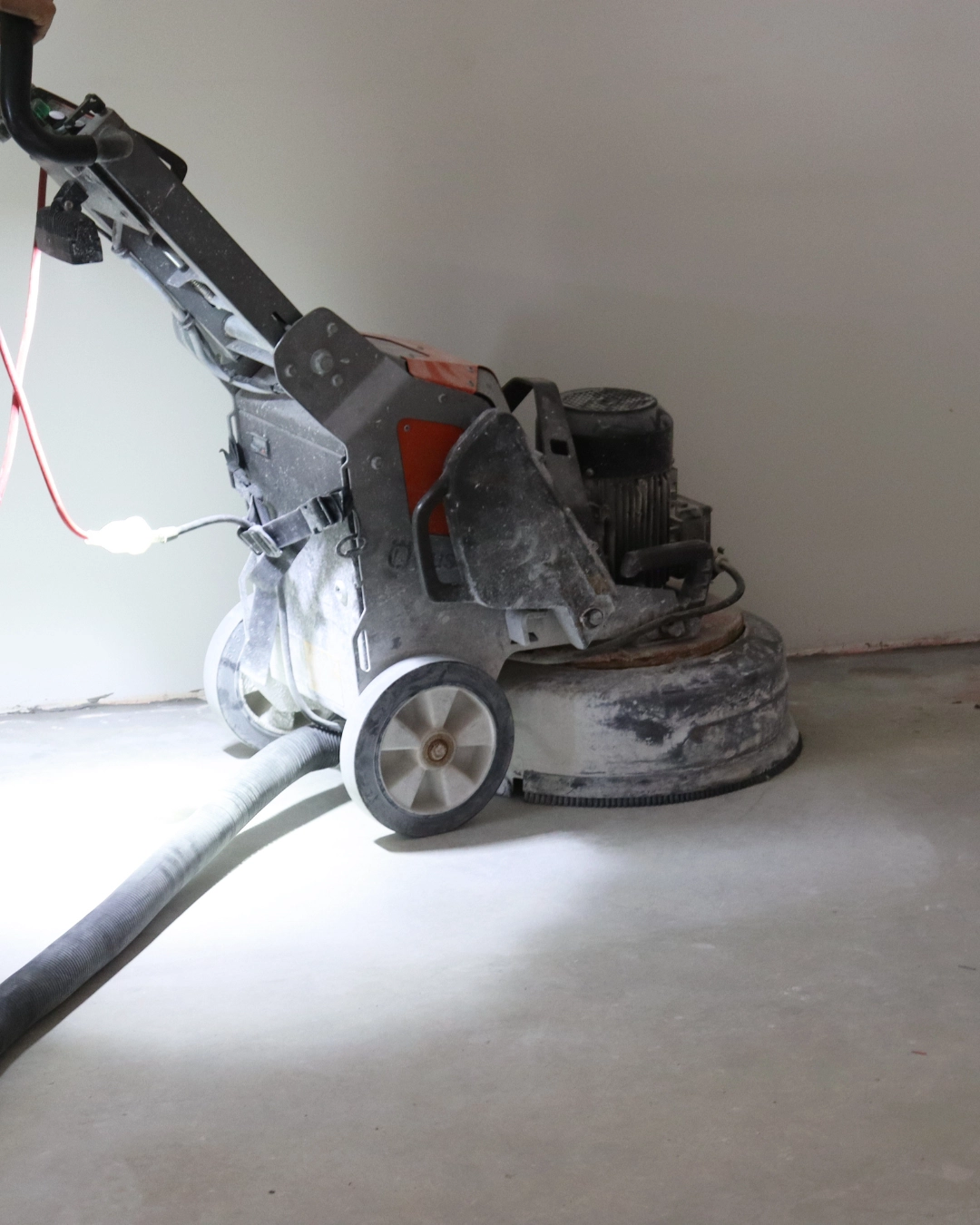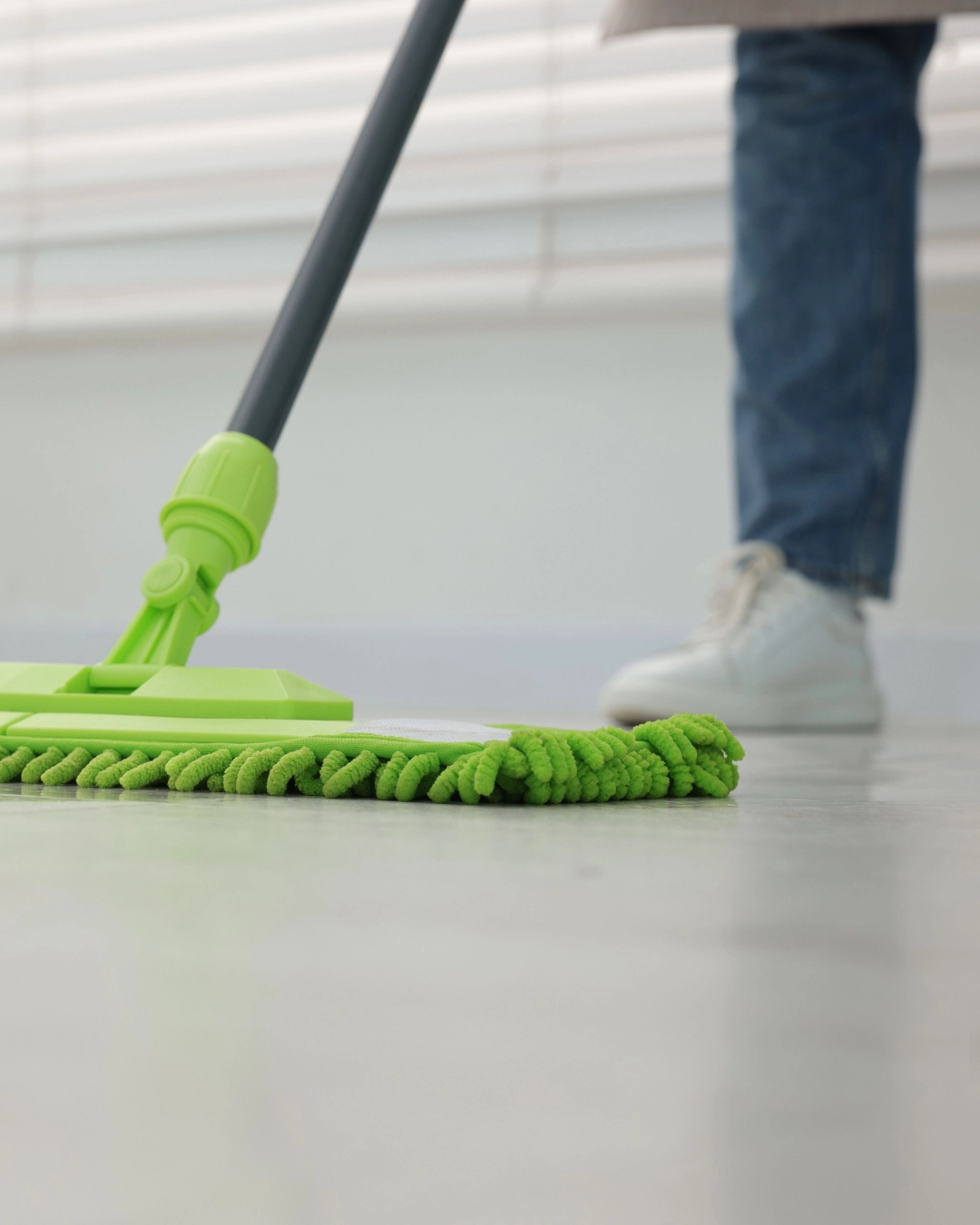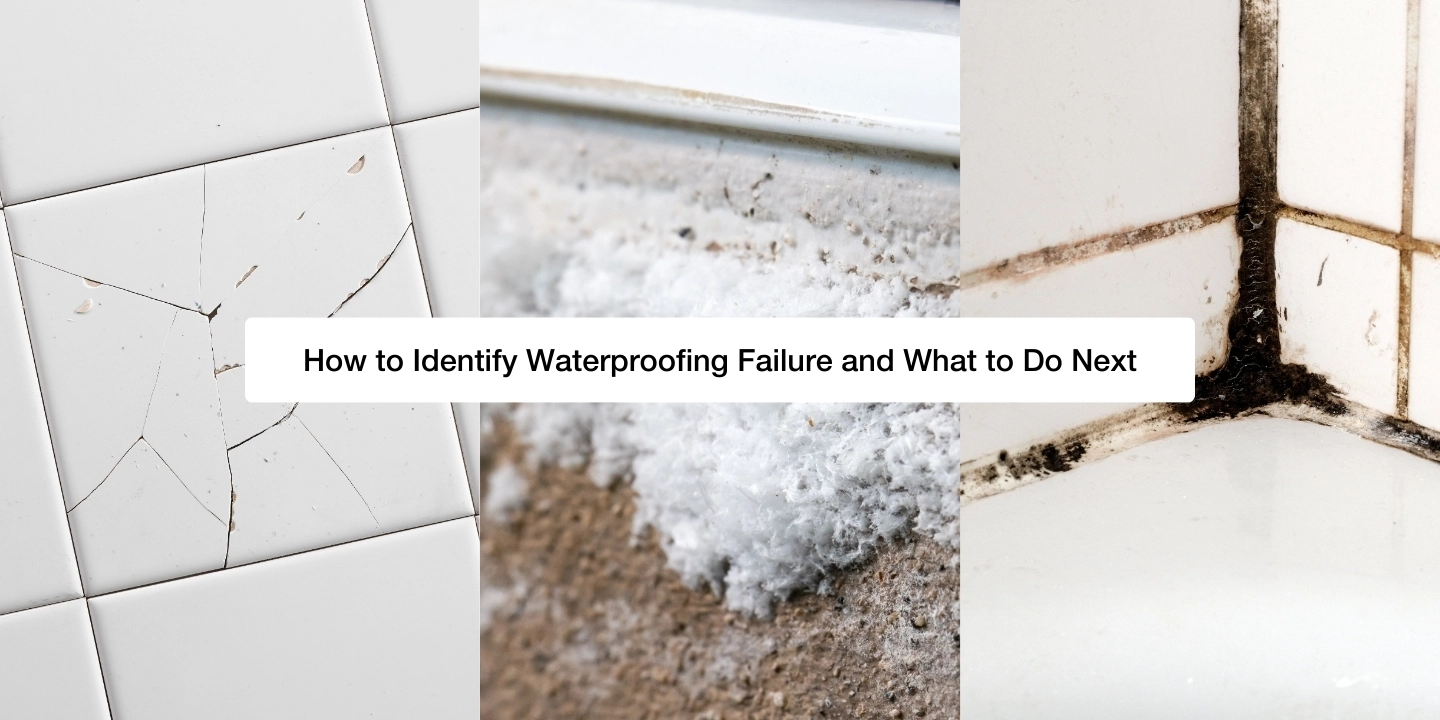Table of Contents
- What is epoxy flooring?
- Key benefits of having an epoxy floor in your home
- Where can epoxy flooring be installed in a home?
- Epoxy flooring styles, colours and top coat finishes
- How does epoxy flooring for a home get installed?
- Pros and cons of epoxy flooring
- Epoxy flooring care and maintenance
- Conclusion
- Frequently Asked Questions
Epoxy flooring is a popular choice among Australian homeowners looking to upgrade their flooring. Its stylish design, customised finishes, and durability make it a great option for both indoor and outdoor spaces.
In this blog, we’ll cover everything you need to know about residential epoxy flooring so you can decide if it’s right for your home. We’ll touch on:
✅ What epoxy flooring is
✅ Where epoxy flooring can be installed
✅ What type of styles, colours and top coat finishes are available
✅ Plus, much more!
If you have any questions or would like to schedule an obligation-free site assessment for an epoxy floor, please contact your nearest Termishine team.
What is epoxy flooring?
Epoxy flooring is a system of multiple resinous layers that cure to form a decorative, seamless finish over concrete, tiles and other suitable substrates. It can be applied in both interior and exterior spaces.
Jump to how epoxy flooring is applied to learn more about the application process.
Key benefits of having an epoxy floor in your home
Epoxy looks great and it can be customised
When it comes to the visual look of an epoxy floor, the options are endless. Layers of the floor can be customised to create a look that best suits your home aesthetic.
You can choose to have a solid, flake or metallic style. All of which come in a range of different colour options. You also get to choose the top coat finish for your floor.
Exceptional durability and scratch resistance
Epoxy flooring is well known for its exceptional durability and resistance to scratching, impact and abrasions.
Once cured, it can easily handle foot traffic and vehicles, which makes it a popular choice for businesses and commercial facilities.
Low maintenance and easy to clean
Epoxy floors are very low maintenance. They just require sweeping with a soft broom and a regular mop to keep them glossy and clean.
The seamless surface of an epoxy floor finish makes it extremely easy to clean, as dust, dirt, and grime have no cracks or crevices to accumulate in.
Epoxy flooring is antimicrobial and hygienic
A completed epoxy floor surface is antimicrobial. The smooth, seamless nature of the floor helps stop microorganisms, such as bacteria and mould, from growing and causing disease.
Strong spill and chemical resistance
Epoxy is non-porous, meaning spilled liquids, grease and chemicals won’t soak into the floor. They will pool on the surface, making it easy to mop.
Epoxy is stain resistant, however, it’s still best to clean up spills promptly to keep the floor looking its best.
Where can epoxy flooring be installed in a home?
A major advantage of epoxy flooring is its versatility. It can be applied to a wide range of interior and exterior spaces throughout a home and over different substrates, including concrete and existing tiles.
Internal applications
✅ Garages, carports, etc.
✅ Sheds and workshops
✅ Kitchens
✅ Living spaces
External applications
A UV-resistant top coat allows epoxy flooring to be applied in a variety of outdoor locations such as:
✅ Outdoor entertaining areas
✅ BBQ areas
✅ Pergolas, verandahs and patios
✅ Walkways and entranceways
Epoxy flooring styles, colours and top coat finishes
The combination of styles, colours and finishes, means every epoxy floor is unique and can be tailored to match the aesthetics of your home.
Please speak with your local Termishine Service Centre to discuss the range of colours and finishes available.
Styles
What is your style? Simple and classic? Textured or glamorous? The options are endless.
Solid colour – Clean and minimal. This style provides a uniform look that works well in modern interiors.
Flake – Decorative flakes on a coloured basecoat to create texture and visual variation. Very popular in garages and outdoor areas.
Metallic – This style incorporates metallic pigments to create a unique, one of a kind marble-like appearance. This style works well in living rooms, kitchens and retail spaces.
Colours
With a wide selection of colours available, Termishine is sure to have something to suit your taste. Check out our gallery to see some of our finishes and imagine how they would look in your home.
Neutral tones – Greys, charcoals, beige, sandstone tones, white, off-white and black.
Vibrant colours – Primary and secondary colours for a bolder, more energetic look.
Flake colours – Typically a blend of complementary shades in neutral or vibrant colour palettes to create depth and texture
Get creative!
Top coat finishes
To finish off your floor, choose your top coat! Select from high gloss, satin or matte. This will determine the final sheen of your floor.
High gloss – Sleek and reflective. Popular for feature floors and indoor spaces.
Satin – Less reflective than high gloss and gives the floor a subtle glow while maintaining a modern, professional look.
Matte – Minimal light reflection, creating a flatter finish. Good at concealing dust and hiding minor imperfections.
How does epoxy flooring for a home get installed?
Installing epoxy flooring in a home is a multi-step process. It requires professional equipment and expertise to ensure a strong, well-bonded floor.
Surface preparation
The longevity of any epoxy floor starts with proper surface preparation.
Preparation is the most important stage of the installation process. While it is typically the most time consuming part, it is vital to the finished product. Depending on the condition of the substrate, it may involve patching cracks and holes. The whole surface then requires grinding and cleaning to complete the preparation of the substrate.
These steps help ensure that the following layers of the epoxy flooring system adhere correctly and don’t delaminate or bubble after curing.
Epoxy installation steps
Primer – This layer helps promote adhesion to the substrate.
Pigmented basecoat – This provides the main colour to the floor.
Flake or pigment broadcast (optional) – Flakes or metallic pigments are added to the wet basecoat layer.
Top coat – This is the protective finish that is applied to seal the previous layers.
Pros and cons of epoxy flooring
Like any flooring option, epoxy flooring comes with its own pros and cons. Here are a few of the main ones to keep in mind:
Pros
-
Durability
-
Aesthetic versatility
-
Low maintenance
Cons
-
The installation process is complex
-
Limited repair options
-
Risk of delamination from long-standing water
Read more about the pros and cons of epoxy flooring in our comprehensive blog.
Epoxy flooring care and maintenance
With the right care, a professionally installed epoxy floor can remain strong and visually appealing for many years. Here’s how to keep your floor in top condition:
To keep your floor in top condition, simply remove dust and fine debris regularly using a soft broom or microfibre mop. It’s important not to use abrasive chemicals or brushes as they may damage the floor.
Make sure to clean any spills, as liquid pooling on the floor may cause damage. This is particularly important for oils and acidic substances.
Over time, high traffic areas may lose some of their gloss and areas exposed to direct sunlight may yellow. A fresh top can be applied to bring your floor back to its original finish and extend its life.
A few other things to help keep your floor in top shape:
-
Place mats or soft pads under furniture legs to avoid scratching
-
Do not drag heavy items across the floor
-
Use soft wheels or floor protectors under trolleys and appliances
Conclusion
Epoxy flooring offers a durable, low maintenance and visually striking solution for homeowners looking to upgrade their floors.
Whether it’s a garage, living space or outdoor area, epoxy flooring can make your spaces look great. With many styles, colours and finishes to choose from, you’ll be able to create a floor that matches the look and style of your home.
Our team is happy to answer any questions you have about epoxy flooring and can schedule an obligation-free site assessment if you’re interested in installing an epoxy floor in your home.
Frequently Asked Questions
Q. How does epoxy work?
A. Epoxy is a resinous liquid that is combined with a curing agent. The resulting chemical reaction allows the epoxy to harden and form a strong, seamless bond to the substrate beneath.
Q. How long does it take for epoxy floors to dry?
A. Drying times vary depending on the type of epoxy used, the ambient temperature and a few other factors. It’s best to speak with your applicator to get an accurate estimate of how long your floor will take to dry.
Q. Can epoxy flooring be used in laundries and bathrooms?
A. Epoxy flooring can be used in laundries and bathrooms.
However, it is not suitable for shower recesses or wet areas where water can pool. Long term pooling of water may cause the epoxy floor to delaminate.
Q. How much does epoxy flooring for a home cost?
A. There are a few considerations when determining the price for epoxy flooring, including:
-
m² size
-
Condition of the existing substrate
-
The colour and finish
-
Internal or external application
For an accurate price, it’s best to contact your nearest Termishine Epoxy Floors service centre to schedule an obligation-free site assessment.
Q. How long will an epoxy floor last?
A. The lifespan of an epoxy floor depends on several factors, such as traffic, exposure to sunlight and the quality of the installation. Typically, an epoxy floor will last for 10 to 20 years with proper care and maintenance.
Q. Can you epoxy over tiles?
A. Yes, in most cases, epoxy flooring can be installed over tiles. The type of tiles and their condition will determine if the job is possible.
Surface preparation, such as grinding, may be required to allow the epoxy floor to adhere to the tiles.
Q. Can you epoxy over concrete?
A. Yes, epoxy flooring can go over concrete. In fact, concrete is the most common type of substrate epoxy flooring is poured over.


















